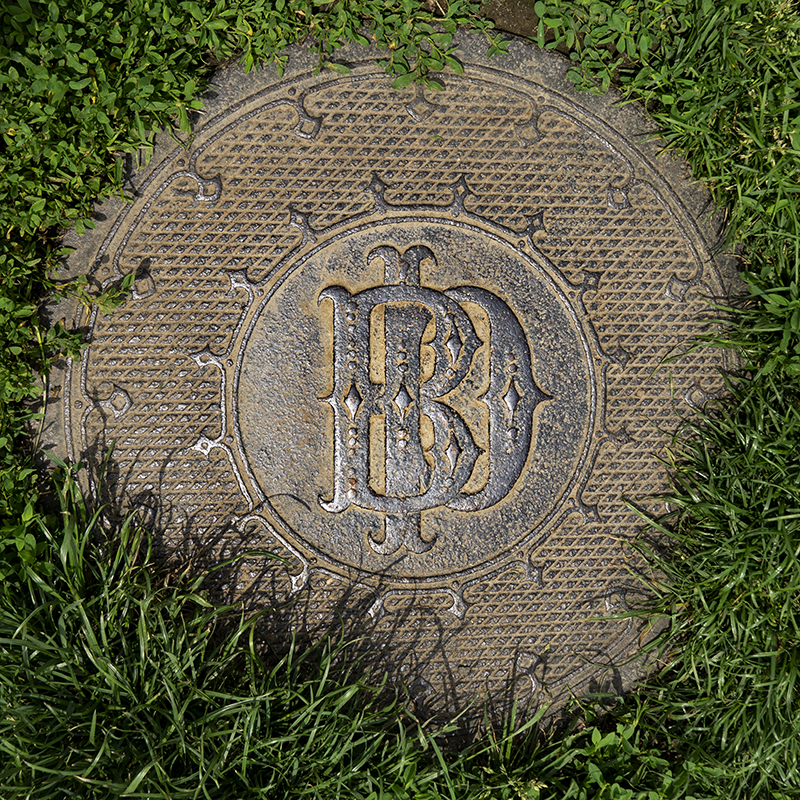circa 1868-1875
This beauty can be found in the center of Prospect Park's Long Meadow, and dates back to the first days of the park itself. Competition with a city across the river prompted the first plans for a large 'Central Park' like area in Brooklyn in the late 1850's. The Civil War, financial woes and competing plans delayed the start of construction until the about 1866. The highly decorative initials stand for the Brooklyn Park (Commission), the body overseeing construction and maintenance of Prospect Park from 1868 to 1875.
DESIGN:
The rich Victorian design of this cover has no equal to any surviving iron cover in New York. The closest relation is to the elaborate coal-hole covers, associated with later 19th century homes in Brooklyn and New York. The designer and the foundry for the cover are not known. The intricacy and fineness of casting is just a small example of why The Brooklyn Parks Commission was widely reviled in its day for its extravagant spending! On a more prosaic note, the cover has an over-lip style. It protrudes beyond the edge of the manhole itself, a style that was essentially totally replaced by the inset cover that sits within a seating and is level with the surrounding terrain, not slightly raised.
UTILITY:
Frederick Olmsted, who designed much of Prospect Park, was particularly concerned about drainage, especially of the rolling hills created to form the Long Meadow. This cover is part of a line of drainage channels that is still in use today, running along near the center of the Long Meadow and draining into the Lake to the south.
RANGE:
There are at least 4 examples of this cover in Long Meadow, along a line, below the Picnic House. The drainage line can be followed almost to the Endsdale Arch, but with different covers, probably added as replacements for damaged BP covers.



